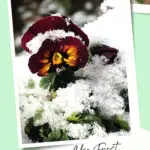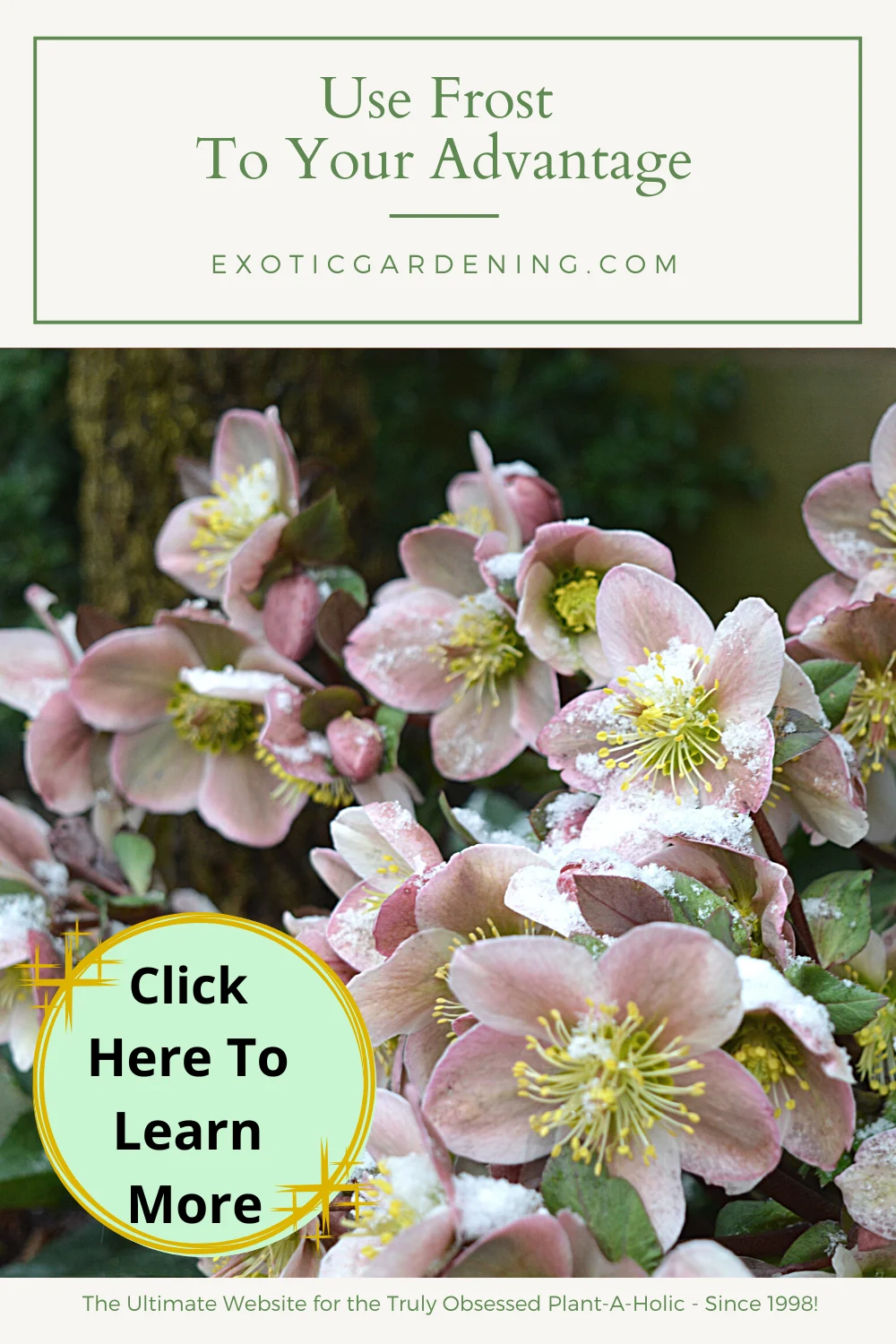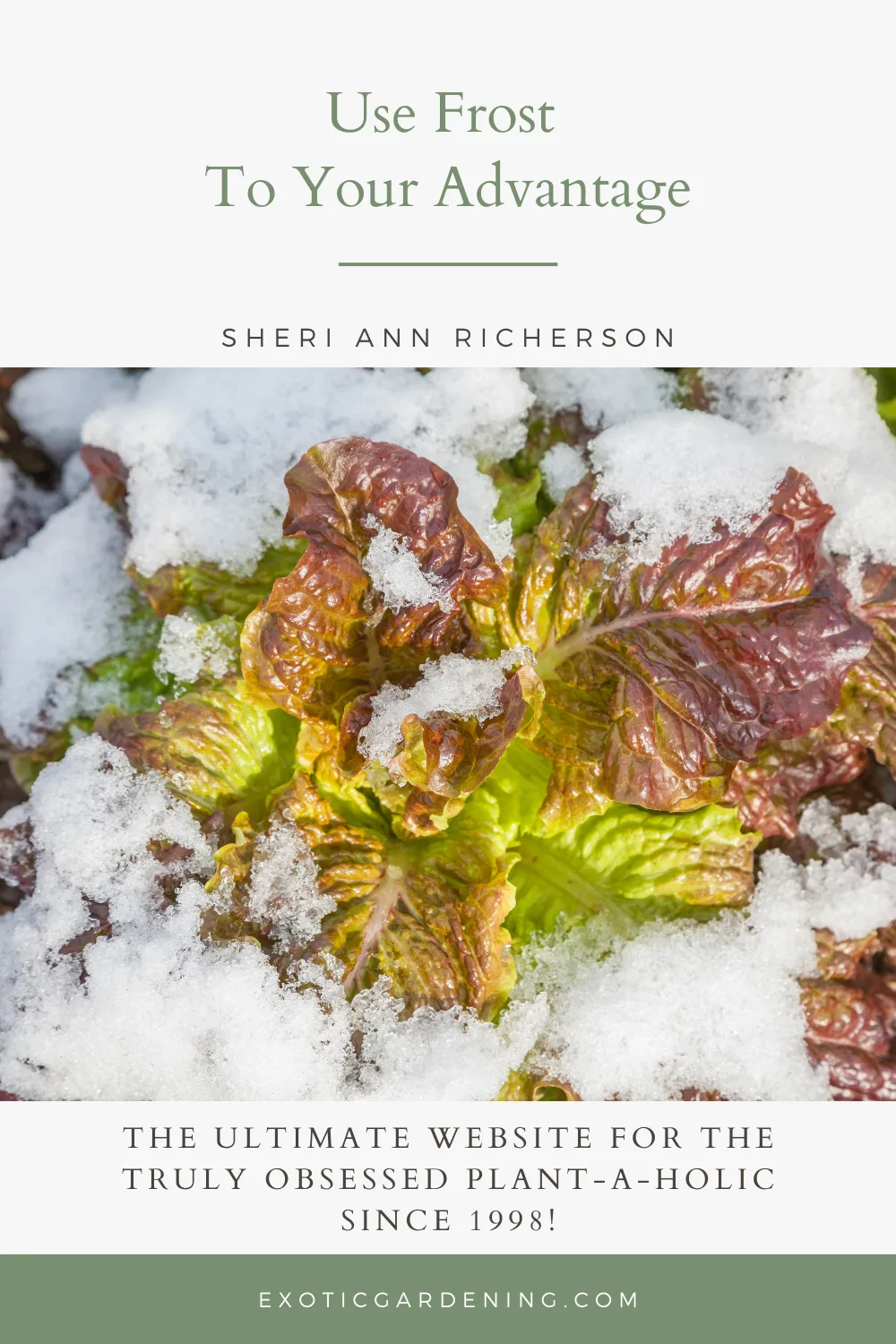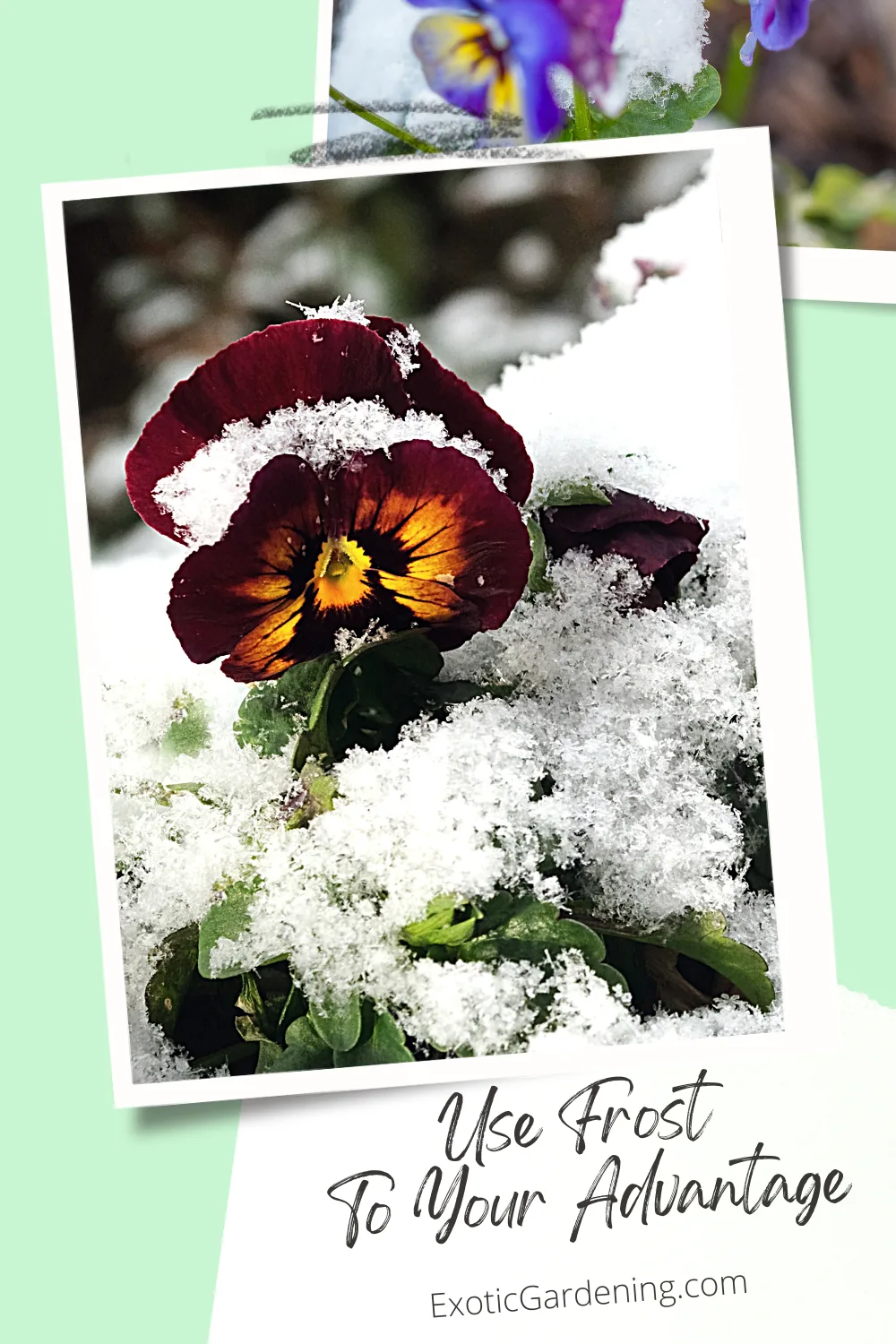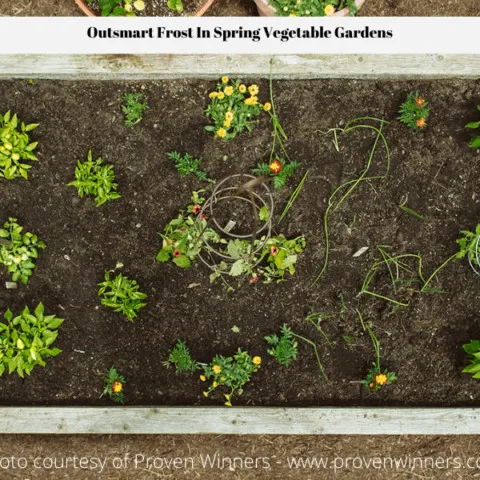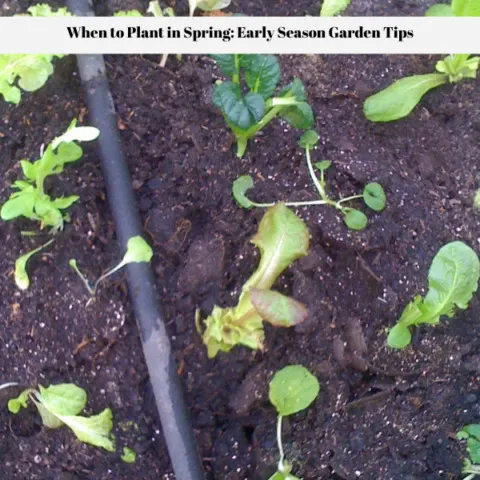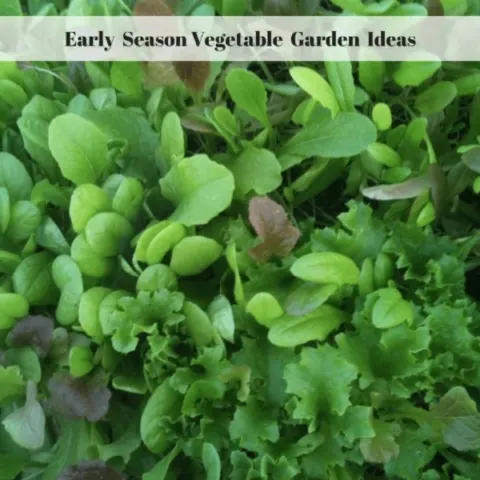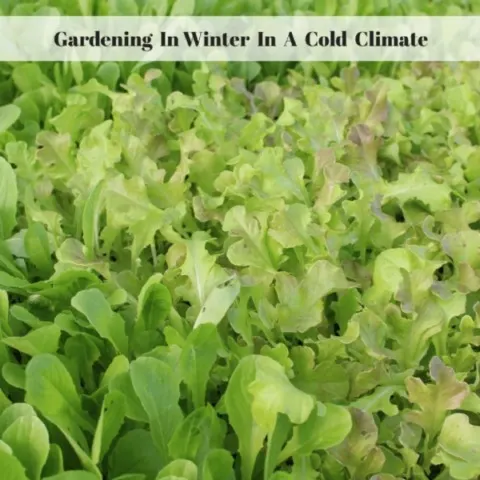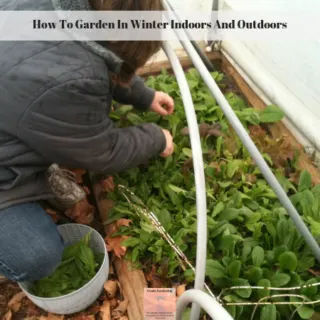Yes, you really can use frost to your advantage in the garden.
While often times gardeners don’t worry about frost until fall rolls around, it is an issue in early spring as well.
Once you learn the basics of using frost to your advantage, you can get a head start on your spring garden and extend that fall garden by several weeks.
After all, frost on plants actually looks pretty and gives the garden an interesting appearance.
For those who really want to master the art of outsmarting frost and cold weather, there are even plants that flower and vegetables that grow under cover all winter long.
Use Frost To Your Advantage In The Fall Garden
When old Jack Frost comes calling in the fall, most of us have already brought our plants indoors to overwinter.
Those who have not, may be covering them with a row cover also often referred to as a frost cover.
By this time of year, those once glorious gardens are now looking threadbare.
Many of the plants that are left are nothing more than wilted brown masses of goo.
Just because the nights are getting colder doesn’t mean you have to allow your garden to look like this.
Plants That Allow You To Use Frost To Your Advantage
Yes, it will take work to remove all that dead plant material and replace it with different plants, but just think how great it will be when your garden looks as good as it did earlier in the summer.
The best part is you don’t have to cover these plants because a little frost will make them look even better.
Even if you plant your garden in containers, these plants will work.
Some of the best plants to use include nontraditional choices such as sedum, ajuga, euphorbia, ornamental cabbage, Artemisia, holly, cedar, creeping thyme, veronica, ferns, ivy, hellebore and various grasses.
Plant some miniature evergreens or holly for year-round color.
Choose evergreens with variegation to add a splotch of bright color to the garden.
Of course, you won’t want to forget typical fall plants such as mums, asters and sedum.
The Best Way To Plant Frost Tolerant Plants
When you plant frost tolerant plants that you intend to remove the following spring, be sure to plant them close together.
This is how to create the full, luxurious look that you are after.
Many people also do not know that plant growth slows or even stops once cold weather sets in, so honestly the plants won’t grow much larger.
To make the most of your plantings put the taller plants in the center, especially if you are planting in a container, and then choose plants that are a size or two shorter to plant around the taller one.
Use this method to create a uniform look all the way around.
If you are using flowering plants in your designs, be sure to deadhead them as necessary.
The more you cut off the faded blooms, the more profusely the plant will bloom.
Remember also that every cut you make will help the plant to bush more.
If you are planting the arrangement in a prepared bed, remember to mulch well once you have had a good freeze.
This will help to prevent the plants from thawing as easily.
Many times it’s the “freeze- thaw-freeze” cycle that causes a plant to die over the winter.
Alternating Plants By Season
Another tip is to leave the plant in the pot it came in to make removal in the spring easier.
If your intent is to plant a garden filled with annual plants or those that don’t come back every year, containers sunk into the ground are lifesavers.
When the plant dies, simply pull the container up, toss the contents into your compost bin and either recycle the container itself or replant it using fresh potting mix and plants.
Sometimes replanting the same container over and over is easier than trying to find the right sized container for the hole you dug.
Be sure to leave the lip of the pot above ground and cover it with a little bit of mulch to hide it.
The other advantage to doing this is it allows you to easily remove plants that are past their prime and replace them with fresher looking plants.
Even in a colder climate such as here in Indiana where the USDA Hardiness Zone is a 5 or 6, depending on where you are at in the state, it is possible to have blooms year-round outdoors.
Use Frost To Your Advantage In The Spring Garden
There are many frost tolerant plants that work well in the spring garden and of course the same techniques apply.
Chose plants that tolerate light frost such as pansies, violas, Hellebores, stocks, snapdragons and more.
Cover tender plants with row cover making sure it does not touch the plant itself if frost threatens.
In the event you cannot find frost cover, milk jugs or 2 liter bottles with the tops cut off work in a pinch.
Just be sure the containers do not touch the plants foliage or flowers.
In addition to flowers, think about early spring crops to plant in the garden such as lettuce, radish, kale, peas, Swiss chard, Brussels sprouts, cabbage and more.
With the exception of a couple of these vegetables, covering them should frost threaten is recommended.
The Backside Of The Gardening Calendar
Outsmart Frost in Spring Vegetable Gardens
Understanding how to outsmart frost in spring vegetable gardens leads to earlier harvests, less plant damage and a longer growing season.
When to Plant in Spring: Early Season Garden Tips
Know when to plant in spring by using these early garden season tips. These tips will allow you to get a head start on your vegetable garden.
Jump Start The Spring Garden With Winter Sown Vegetables
Get a jump start on the spring garden with winter sown vegetables. Once you know how to do this, its easy to grow vegetables year round.
Vegetable Garden Frost Protection: Extending Your Winter Gardening Season
Discover essential tips and techniques for vegetable garden frost protection. Extend your winter gardening season with our guide.
Gardening In Cold Climates In Early January
Gardening in cold climates in January without supplemental heat is possible. The seeds, plants and garden structure is what matters.
Vegetables to Plant in January: Garden Tips for Year-Round Growing
There are a number of vegetables to plant in January as well as some flowering plants. Indoors or out, find out dates to start in Indiana.
The Best Vegetables To Plant In February
There are a number of cool season vegetables to plant in February directly in the garden even if you live in a cold climate.
Embracing The Beauty of Winter: A Guide To Winter Flowering Plants
Elevate your garden with winter flowering plants. Explore cold-hardy varieties, garden prep, and nurturing tips.
How To Garden In Winter Indoors And Outdoors
Learn how to garden in winter indoors and outdoors. There are many vegetables and herbs that don't mind the cold or thrive in containers.
Save Money! Harvest Free Vegetables Year-Round In Any Climate!
Yes, you can harvest vegetables year-round, even if you live in a cold climate by planting at the right time and gardening under cover.
September Is Here But Don't Quit Gardening Now!
September is here but there is no need to quit gardening. Plant those cool weather crops from seed or transfer plants into the garden.
Monkshood Flowers For The Fall
There are some late blooming flowers for the fall season such as monkshood. Autumn monkshood is known to bloom from September to November!



